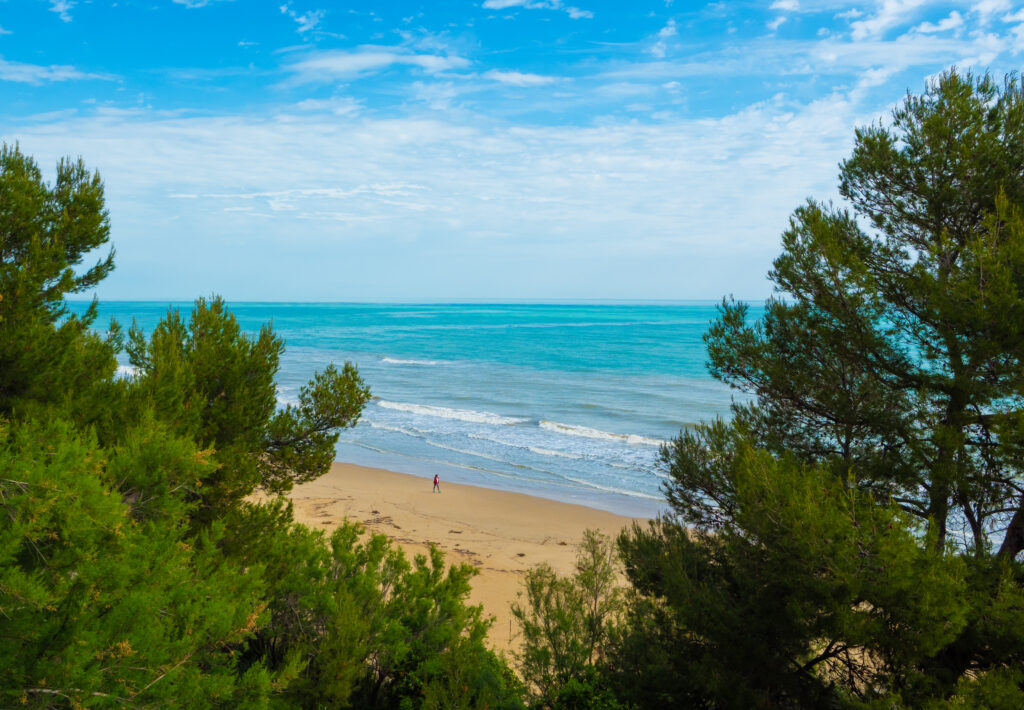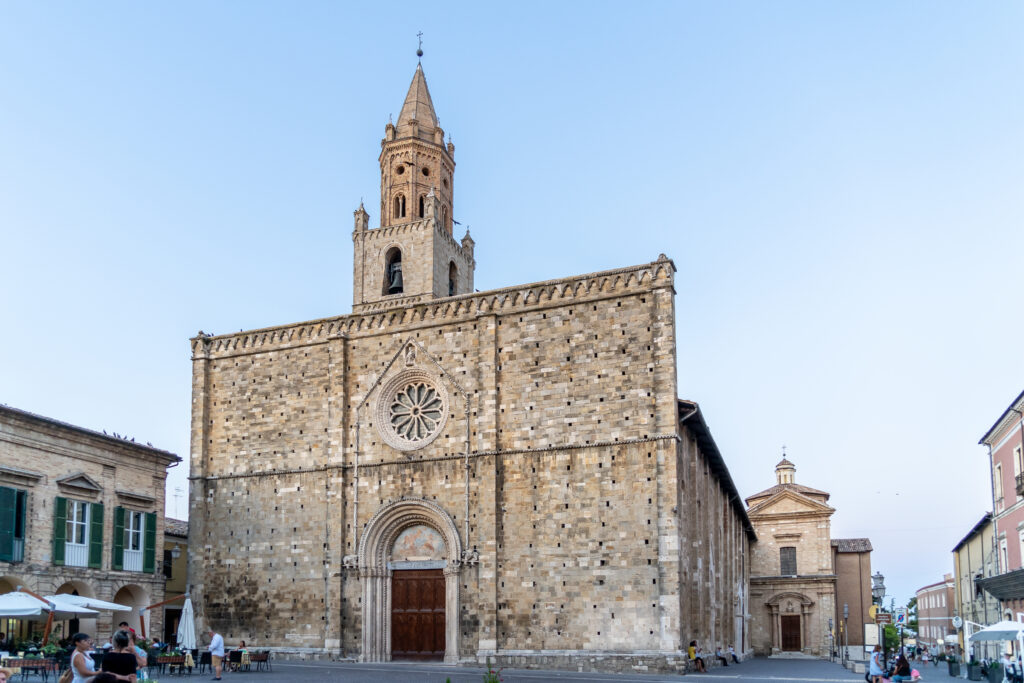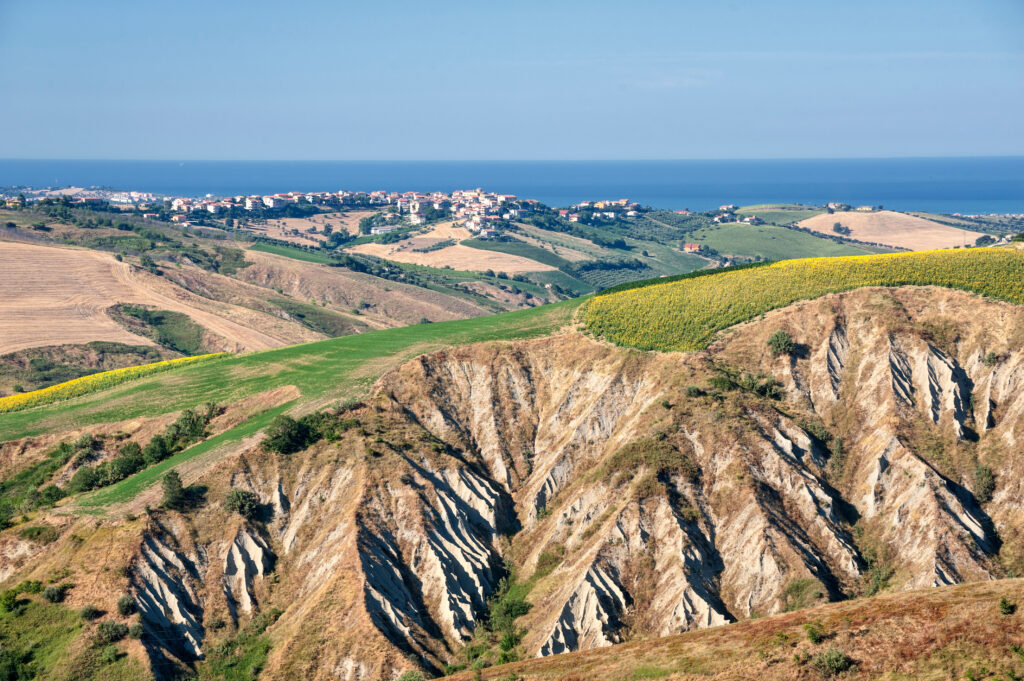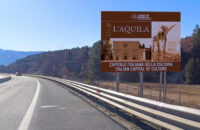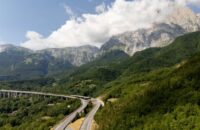As the vacation season of Ferragosto approaches, we invite you to discover two jewels nestled in the beautiful province of Teramo, a short distance from each other. Pineto separated from the Adriatic Sea by the spectacular band of Mediterranean pines that gives it its name, Atri lying on the verdant hills of the Terre del Cerrano, among the famous gullies. Halfway between them is the small village of Mutignano. Crowning this landscape are the peaks of the Gran Sasso Massif, visible from every point on the horizon.
For centuries, the present municipal territory of Pineto was an integral part of Atri, serving as its port, and then came under the administration of Mutignano, before gaining autonomy. Pineto, in fact, is a relatively young municipality, with less than a hundred years of history, while Atri boasts a population continuity of about three thousand years, making it one of the oldest urban centers in Italy. Before becoming one of the most popular seaside resorts on the Adriatic, Pineto was identified primarily by the Torre del Cerrano, a watchtower located about two kilometers south of the present town.
The marine protected area Torre del Cerrano
The Cerrano Tower, erected in the 16th century to defend the coast from Saracen raids, is among the best preserved on the Adriatic coast. Today it houses a Museum of the Sea and gives its name to theMarine Protected Area. This site boasts a rich marine biodiversity, with numerous animal species and a significant plant contingent. In its waters one can admire the rare gastropod Trivia adriatica and the impressive bioconstructs of Sabellaria halcocki, as well as various species of fish and mollusks.
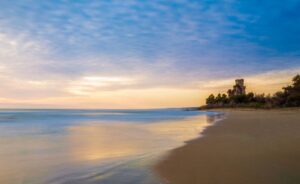 Considered one of the most photographed views of the Adriatic coast, with its wide sandy beach and shallow waters, it is an ideal place for a family vacation. Among the summer activities offered by the reserve are the snorkeling among the remains of Atri’s ancient harbor, nature walks and yoga classes in the pine forest, dolphin spotting by boat and educational workshops for children.
Considered one of the most photographed views of the Adriatic coast, with its wide sandy beach and shallow waters, it is an ideal place for a family vacation. Among the summer activities offered by the reserve are the snorkeling among the remains of Atri’s ancient harbor, nature walks and yoga classes in the pine forest, dolphin spotting by boat and educational workshops for children.
Pineto: a green gem on the blue Sea
Until the beginning of the last century there was only the splendid Villa Filiani, which now stands in the center of the town and hosts concerts and conferences for the municipality. Around this building, in little more than a century, a picturesque and lively seaside resort has flourished, which this year was awarded its 22nd Blue Flag by the FEE (Foundation for Environmental Education) and four sails by the Italian Touring Club and Legambiente, as part of the “The Most Beautiful Sea” editorial project.
Its vast pine forest is one of the secrets of its success. Unlike many Adriatic seaside resorts where construction has compromised the shoreline, Pineto owes its name and beauty to the wide green belt that protects the long sandy beach, separating it from buildings and urban life. This natural park, created a century ago with the planting of more than two thousand Mediterranean and Aleppo Pines, creates a zone of fragrant shade just a few steps away from the beach umbrella, providing a unique microclimate that is particularly pleasant on sultry days.
A short distance from this pine forest, the city park of Pineta Filiani is home to an adventure park suitable for all ages. This abundance of nature and outdoor spaces, as well as the range of services offered by the bathing lidos, with a generous sandy beach and the shallow waters of the Adriatic, make Pineto an ideal location for the whole family.
Atri: an outdoor theater of Art and History
For those who don’t want to give up art and culture even during their summer vacation, just 11 kilometers from the beach of Pineto lies in the hills one of the most beautiful historic centers in Abruzzo and the entire country. Atri, with its three thousand years of history, is always ready to surprise us with its treasures.
It was great even before the rise of Rome and was minting coinage under its own name in the 4th century B.C., when it was running prosperous trades with Greeks, Etruscans, Piceni and Umbrians. Ancient Hatria was also the birthplace of the family that gave Rome two emperors, Hadrian and Trajan, which is why it is said to have given its name to the Adriatic Sea itself. From the late fourteenth century until the mid-eighteenth century it was the capital of a duchy under the Acquaviva d’Aragona family, among the most powerful families in the Kingdom of Naples.
Of this prosperous past, Atri jealously guards the evidence. In the cathedral of Santa Maria Assunta one can admire one of the most beautiful fresco cycles in the entire region, dedicated to the lives of Jesus and Mary, painted by Andrea de Litio, a painter born in Lecce nei Marsi and who died in Atri itself at the end of the 15th century. In the adjacent Church of Santa Reparata one discovers a perfectscale copy of the great Baldachin of St. Peter’s in Rome, made in 1677 in walnut wood by Carlo Riccione, a pupil of Gian Lorenzo Bernini. The cathedral also provides access to the rich Capitular Museum, which displays precious altarpieces and fine liturgical vestments, overlooking a magnificent cloister.
But the wonders of Atri do not end there. The town is dotted with striking churches, such as the 13th-century Church of San Nicola, and imposing palaces, starting with the Ducal Palace. There is no shortage of cultural venues such as the beautiful Municipal Theater, overlooking the cathedral and equipped with three tiers of boxes. Atri is also a capital of taste, with a rich production of oils, the intense Pecorino cheese, licorice and Panducale, a sweet made from eggs, sugar, flour and almonds, now produced on an industrial scale from a recipe dating back to the 14th century.
To explore these gems and uncover the many secrets of its thousand-year history, such as the Roman cisterns, the “Atri in Tour” project, supported by the Municipality of Atri, offers a rich program of guided tours from July 2 to September 14, to experience a fascinating journey through history, nature, traditions and flavors.
Discovering the Badlands
Between Atri and Pineto there is also room for Nature and adventure lovers. In fact, the landscape surrounding the hill of Atri is characterized by one of the most unique geological formations in the pre-Apennine belt, the Calanchi. These peculiar land formations are characterized by gully-like erosions that are created on clayey, sparsely vegetated soils by the erosive action of rainwater.
A Protected Nature Reserve of 380 hectares, now entrusted to the WWF, is responsible for the conservation of this moonscape where, despite its particularly rugged exterior, it is possible to come across interesting plant species such as the wild gladiolus and spot numerous birds of prey such as kestrels and buzzards. Summer is the perfect time to set out to explore, even by starlight, with a program of events dedicated to everyone.
Mutignano, a terrace by the sea
In the midst of badlands, halfway between Atri and Pineto, located on a rise from which it overlooks the sea, stands the medieval village of Mutignano, the original historic nucleus of present-day Pineto. Its history is closely linked to that of the dukes of Atri, for whom it had arisen to protect the port. Some of its inhabitants in fact arrived there as refugees from the eastern coast of the Adriatic Sea more than five centuries ago, when many Slavs of the Christian religion were forced to leave the provinces of Illyria and Epirus, present-day Albania, because of the Ottoman advance. Not to be missed is the Church of St. Sylvester, which houses a splendid Renaissance altarpiece by Andrea De Litio, dedicated to St. Sylvester, which was returned to the church walls in 2022 after it was stolen and later recovered by the Carabinieri’s Protection Unit.
But Mutignano is also a spectacular panorama that from the blue of the sea meets the green of the hills and the gray of the badlands to sweep up to the peaks of the Gran Sasso. A panorama that sums up all the best of this wonderful piece of Abruzzo, which can be reached by the A24 highway, exiting at the Val Vomano interchange and continuing on the SS 150, or by the A14 highway via the Atri/Pineto interchange.

